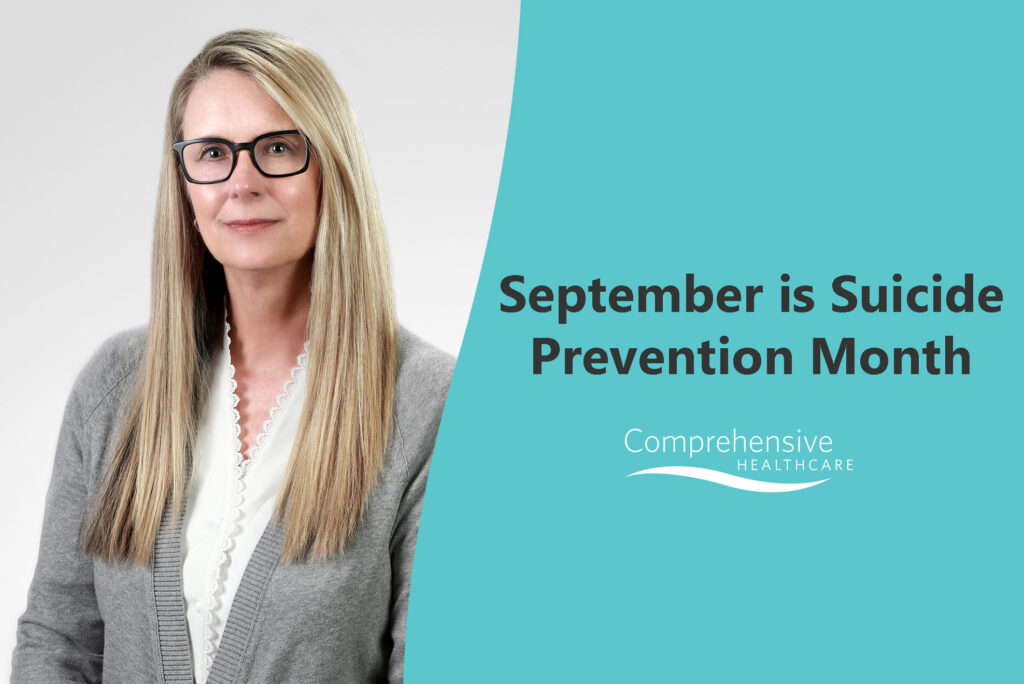By: Jodi Daly, Ph.D., President and CEO
Each year, millions of people are impacted by suicide. When you consider that nearly 50,000 individuals died by suicide in the United States in 2019, in addition to an estimated 12 million more who seriously considered suicide, it is impossible to ignore the weight of this public health dilemma.
As another Suicide Prevention Month comes to pass this September, we reflect on the immense value of every individual life and seek to shine a light on the pathway to prevention that exists for everyone, even when the darkness threatens to hide it away. I lost my brother to suicide years ago, and I’m reminded every day of how crucial it is that we support those who feel especially shrouded in darkness. After much reflection, I have come to the conclusion that my feelings of shame and guilt, due to the loss of my brother, have been pointless. The importance of exchanging those feelings for hope and caring for those suffering offers me purpose and clarity. Humans survive by our collective community and connection – community is the cure to hopelessness. We all have a role to play in suicide prevention efforts.
Community members, friends, and loved ones who struggle with suicidal thoughts may feel alone and disconnected from the support they need most, and we can all extend a hand in times of need. While crisis resources like the suicide hotline number (1-800-273-8255) are critical for urgent support, we also encourage earlier steps to help prevent mental health concerns from escalating.
Vivek Murthy, MD, United States Surgeon General, wrote Together: The Healing Power of Human Connection in a Sometimes Lonely World, a book that outlines the importance of human connection in assisting and preventing suicide as well as other societal challenges such as addiction. He demonstrates that the healing power of community and connection is a balm that can assist with sickness, suffering and death. What does this balm look like? It could involve checking in on friends who may be having a hard time, joining groups that offer connection and community, learning new skills through emotional resilience trainings, and enjoying healthy activities with hiking groups or other clubs.
At Comprehensive Healthcare, we take our role in preventing suicide very seriously, and we are always working to expand access to care. Especially in rural areas where data show the risk of suicide is higher, we work to ensure safe access to housing, limited access to firearms, and clinical support for those suffering from substance use disorders.
It’s also vital that we as a community focus on prevention at our schools, jails, and hospitals. In this issue, you’ll read about our new programs to expand these efforts, including partnerships with Kennewick School District high schools to embed counselors who engage and connect students with our youth programs. We are also expanding our crisis services to the Kittitas County Corrections Center through a new contract, in addition to building our crisis stabilization program in Klickitat.
Our focus on suicide prevention – just like everything we do – is rooted in a strong commitment to responding to our communities’ most pressing needs. That begins with listening, which – as you’ll learn about on page 4 – includes regular client surveys, community panels, and audits to tangibly benchmark our services and outcomes.
This fall, we’re also inviting The Joint Commission to ensure our care meets high quality health standards upheld by many other healthcare organizations. Although this is not a requirement for behavioral health organizations, we recognize behavioral health as central to health itself and look forward to ongoing collaboration with The Joint Commission and other organizations that help us provide a full continuum of care to our clients across Washington.
Whether you have lost someone to suicide or you struggle with your own thoughts of suicide, you are not alone, and help is available. Everyone knows of someone who has attempted or died by suicide – these are our neighbors, parishioners, teammates, school mates and family. To bring awareness to suicide and prevention strategies, we must have a guiding discussion and open heart. We need to talk openly about depression, addiction and struggles in general. We must be willing to talk about shock, consequences, fear and guilt. We must recognize these for the shared, universal experiences they are – and treat our support for one another as universal experiences, too.
With an outstretched hand and a listening ear, we’re working to break down silos and engage conversations – and we hope you’ll join us.



